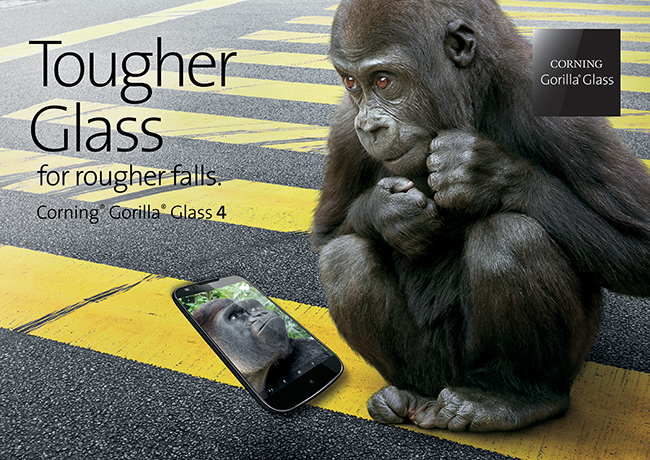
The fine folks of Corning have been in the tough glass business for decades. Over the last seven years or so, they’ve been refining their technology to protect our phones from the various dangers of everyday life, and this latest iteration offers better drop protection.
Gorilla Glass 2 arrived in 2012 and was about 20% percent thinner than its predecessor. Just one year later, Corning announced Gorilla Glass 3, improving upon the scratch-resistance of the glass (by about 40%). At CES this year, the Corning booth proudly talked about a new antimicrobial cover glass that cut down on the spread of bacteria.
All of the above is great, but it’s not scratches or germs that cause smartphone owners distress. Most people don’t care about these minor types of screen damage. They only really care about total display annihilation. That one drop accompanied by a small but sickening crunch.
Indeed, for Corning, the glass can be as scratch-resistant as a diamond (or sapphire), but if it’s still shattering when it hits the ground, then what’s the point? Corning found that more than 70% of “field failures” in devices were the result of a sharp drop, so it set out to develop new drop-tests that better simulate the real life scenarios in which these phones were breaking.
These tests, involving one meter drops onto sandpaper used to similar the roughness of concrete and asphalt, were used to test the durability of Gorilla Glass 4. Apparently, this new breed of Gorilla Glass survived about 80% of the time and is up to two times tougher than competing glass products. According to Corning, the soda-lime glass deployed in commercial devices today broke “nearly 100% of the time.”
Gorilla Glass 4 is now shipping to device manufacturers around the world and will likely make an appearance in next year’s flagship phones.
[source]Corning[/source]


